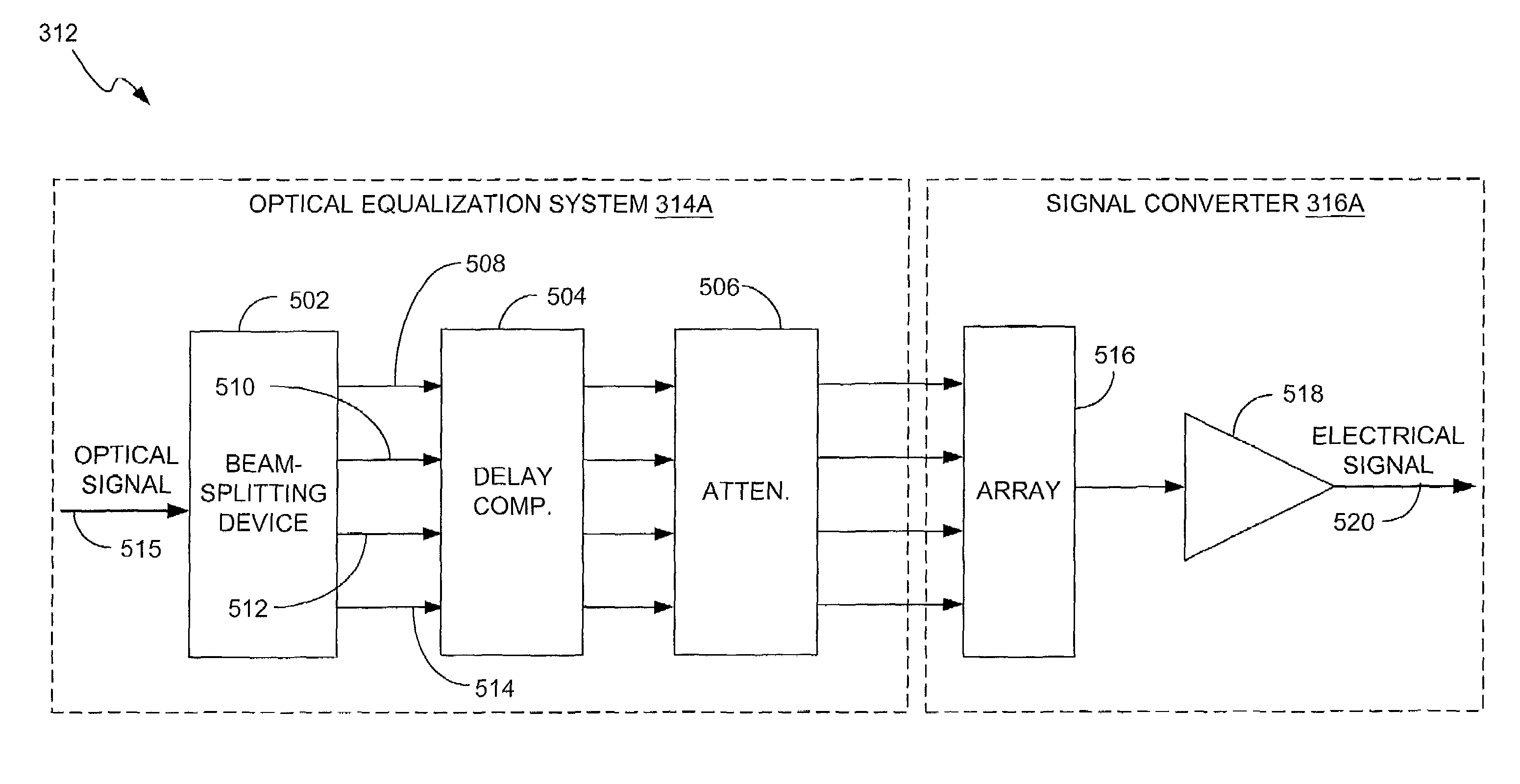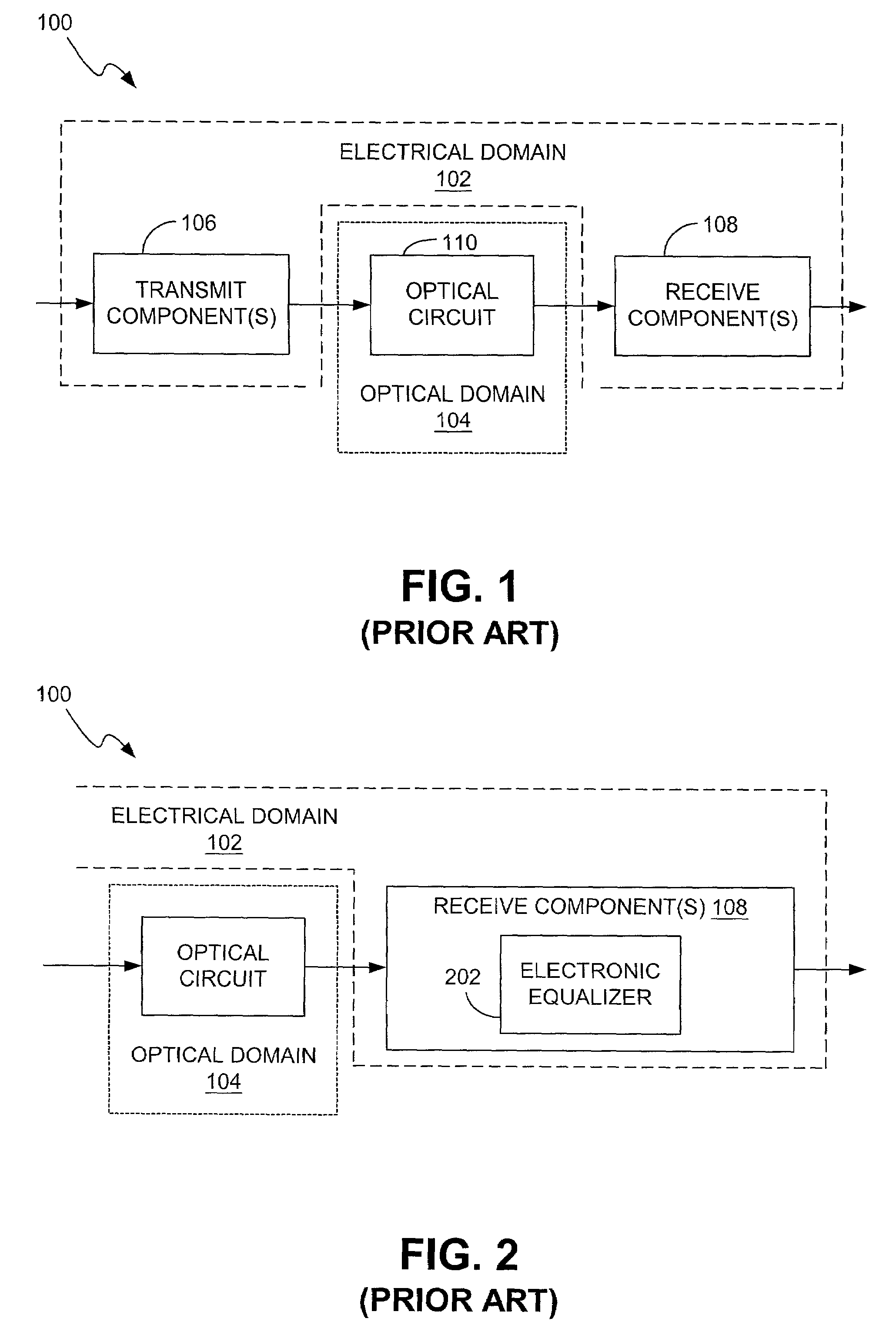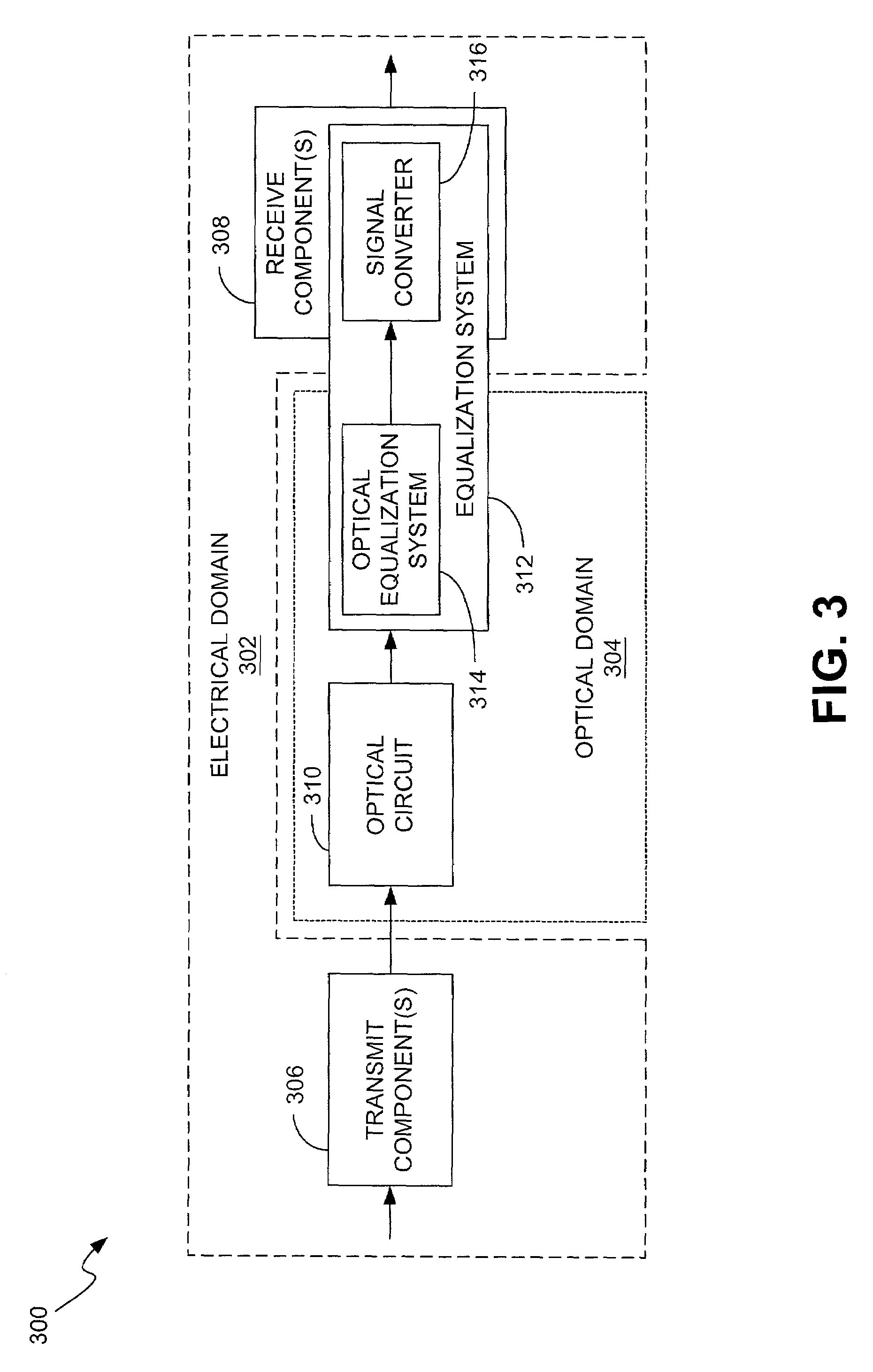Equalization of optical signals
- Summary
- Abstract
- Description
- Claims
- Application Information
AI Technical Summary
Benefits of technology
Problems solved by technology
Method used
Image
Examples
first embodiment
[0032]equalization system 312 is depicted in FIG. 5. As shown in FIG. 5, equalization system 312 includes an optical equalization system 314A and a signal converter 316A. Optical equalization system 314A incorporates a beamsplitting device (or “beamsplitter”) 502, a delay component 504 and an attenuator 506. The beamsplitting device, delay component and attenuator optically communicate to provide multiple beams to the signal converter. In particular, beamsplitting device 502 produces beams 508, 510, 512, and 514 in response to receiving an input optical signal (represented by arrow 515). In some embodiments, each of the beams is a copy of the input optical signal. It should be noted that although four beams are depicted in FIG. 5, various other numbers of beams can be used.
[0033]Beamsplitting device 502 provides beams 508, 510, 512, and 514 to delay component 504. Preferably, delay component 504 differentially delays each of the beams and then provides the beams to attenuator 506. A...
second embodiment
[0037]equalization system 312 is depicted in FIG. 7. As shown in FIG. 7, equalization system 312 includes an optical equalization system 314B and a signal converter 316B. Optical equalization system 314B incorporates a beamsplitting device 702, a delay component 704 and an array of photodetectors 716. The beamsplitting device and delay component optically communicate to provide multiple beams to the signal converter. In particular, beamsplitting device 702 produces beams 708, 710, 712, and 714 in response to receiving an input optical signal (represented by arrow 715). In some embodiments, each of the beams is a copy of the input optical signal. It should be noted that although four beams are depicted in FIG. 7, various other numbers of beams can be used.
[0038]Beamsplitting device 702 provides beams 708, 710, 712, and 714 to delay component 704. Preferably, delay component 704 differentially delays each of the beams and then provides the beams to array 716. More specifically, each o...
third embodiment
[0047]the equalization system 312 is depicted in FIG. 10. In FIG. 10, equalization system 312 includes an optical equalization system 314C and a signal converter 316C. The optical equalization system 314C includes a beamsplitting device 1002, a delay component 1004, and an attenuator 1006. An input optical signal, represented by arrow 1007, is provided to beamsplitting device 1002. In response to the input optical signal, beamsplitting device 1002 produces pairs of beams, e.g., pairs 1008A, 1008B, 1010A, 1010B, 1012A, 1012B, and 1014A, 1014B. Each of the pairs of beams is provided to and differentially delayed by delay component 1004. Preferably, delay component 1004 provides an equivalent, predetermined delay to each beam of a pair of beams. The pairs of beams then are provided to attenuator 1006, which optically scales at least one of the beams. In the embodiment of FIG. 10, attenuator 1006 is configured to provide a fixed attenuation to each of the beams. In other embodiments, ho...
PUM
 Login to View More
Login to View More Abstract
Description
Claims
Application Information
 Login to View More
Login to View More - R&D
- Intellectual Property
- Life Sciences
- Materials
- Tech Scout
- Unparalleled Data Quality
- Higher Quality Content
- 60% Fewer Hallucinations
Browse by: Latest US Patents, China's latest patents, Technical Efficacy Thesaurus, Application Domain, Technology Topic, Popular Technical Reports.
© 2025 PatSnap. All rights reserved.Legal|Privacy policy|Modern Slavery Act Transparency Statement|Sitemap|About US| Contact US: help@patsnap.com



